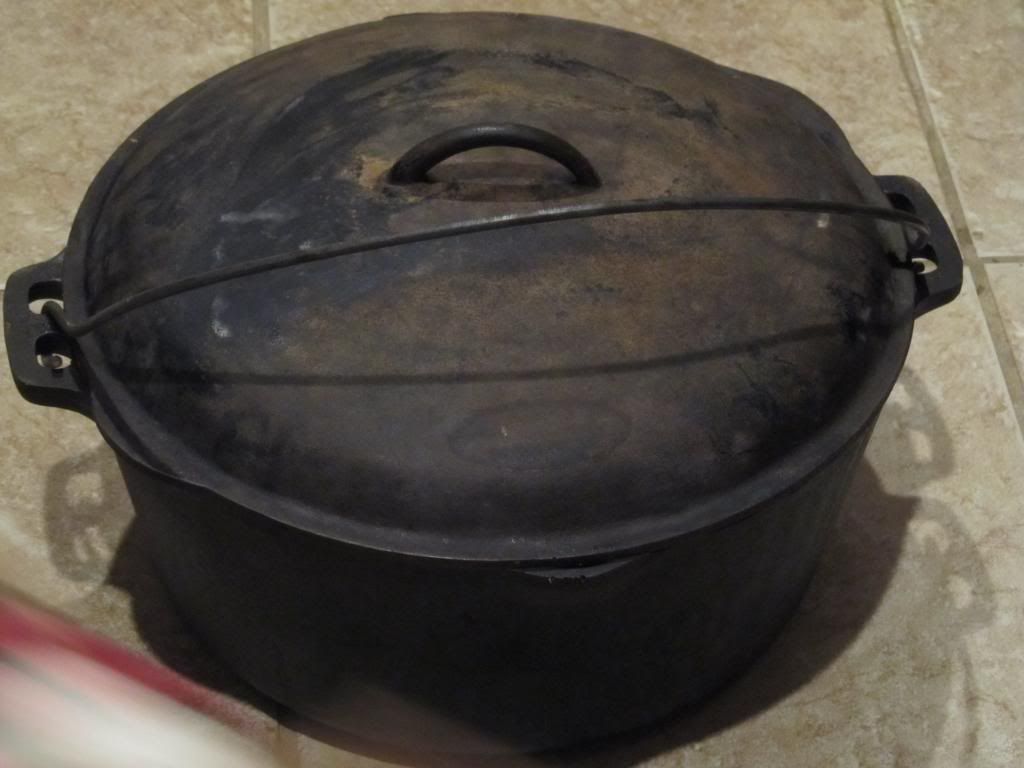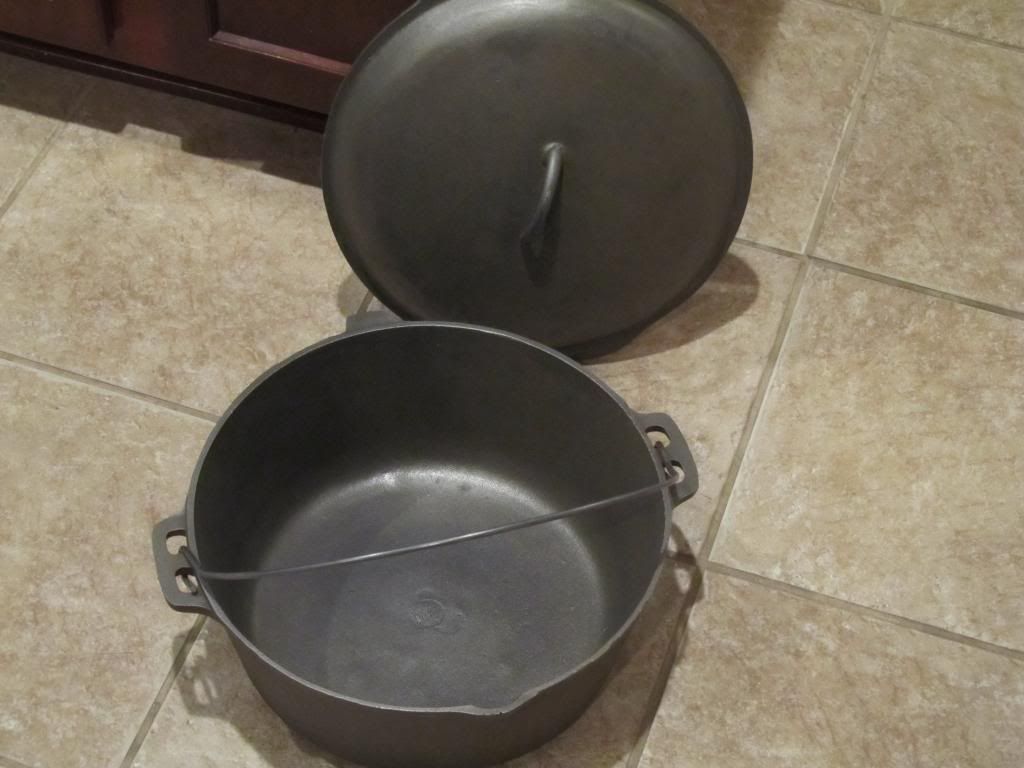Picked this up from a guy for $25. Lid fits nice and snug. inside of lid says 13 1/2" #12, bottom says Made in U.S.A. there is an interesting symbol inside the bottom of pot, it is a circle with several horizontal lines inside of it...anyone know who made this and what size it is? How much is it worth? I plan on restoring it and making lots of gumbo with it!


Picture of symbol.


Picture of symbol.


